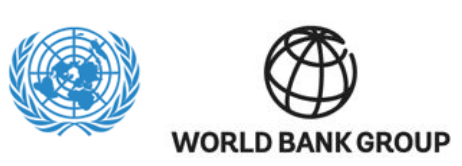 10 October 2016: UN Secretary-General Ban Ki-moon announced the launch of a new platform for scaling up innovative finance solutions to support the achievement of the Sustainable Development Goals (SDGs). The Financial Innovation Platform aims to identify and pilot innovative finance instruments that can drive investment and support SDG interventions. Meanwhile, the World Bank Group released a 2030 vision document, identifying steps for the Bank to support the SDGs, including through open trade promotion, sustainable concessional financing, and helping to bridge the infrastructure gap.
10 October 2016: UN Secretary-General Ban Ki-moon announced the launch of a new platform for scaling up innovative finance solutions to support the achievement of the Sustainable Development Goals (SDGs). The Financial Innovation Platform aims to identify and pilot innovative finance instruments that can drive investment and support SDG interventions. Meanwhile, the World Bank Group released a 2030 vision document, identifying steps for the Bank to support the SDGs, including through open trade promotion, sustainable concessional financing, and helping to bridge the infrastructure gap.
The concept of a multi-stakeholder platform to finance the SDGs was first introduced at the Third International Conference on Financing for Development (FfD) in Addis Ababa, Ethiopia, in 2015. The launch event, titled ‘Financial solutions for the SDGs,’ took place on 10 October 2016, at UN Headquarters in New York, US, with the participation of high-level officials from ministries of finance and foreign affairs, and leaders from global financial institutions.
Ban noted that the SDGs represent the catalyst that “can pull the global economy from its current malaise and push back against isolationism and protectionism.” While the Addis Ababa Action Agenda (AAAA) set a framework to harness financial markets and provide commercial incentives to deliver on the SDGs, he explained, achieving them will require scaled up investment and reorienting existing flows to sustainable objectives. He noted that financial actors and institutions are already beginning to develop solutions for attracting private capital in support of the 2030 Agenda for Sustainable Development. Ban stressed the need, however, for: the international community to align financial markets with sustainability; putting a correct price on systemic and interconnected risks; and aligning the value of assets with the SDGs.
On the Financial Innovation Platform, Ban said it will provide the best possible know-how to support the incoming Secretary-General scale up the international community’s efforts and ambition. The Platform is expected to engage key development actors, including governments, civil society, philanthropic organizations, entrepreneurs, institutional investors, banks, project developers and development finance institutions.
Peter Thomson, President of the UN General Assembly (UNGA), stressed the need for clear policy directives that help to shift the trillions of dollars held by development banks, institutional investors (pension funds, insurance companies and sovereign wealth funds), as well as capital and bond markets towards green investments and priority sectors. He suggested that Member States consider establishing a Group of Friends of SDG Finance, including with inputs from the financial sector, to drive action at the UN.
Stressing that if business is not sustainable then society is at risk, and if society is not sustainable then business is at risk, Mark Wilson, Group CEO of Aviva, said “we are engaged in nothing less than the transformation of global capital markets.” Judith Rodin, President, The Rockefeller Foundation, said realizing the SDGs will require a new era of collaboration and coordination, and the UN Secretary-General has the convening power to bring together leaders from different sectors.
Also on the issue of SDGs financing, the World Bank- International Monetary Fund (IMF) Development Committee welcomed on 8 October the document, titled ‘Forward Look – A Vision for the World Bank Group in 2030,’ which represents the common view of shareholders on how the World Bank can support the 2030 Agenda while staying focused on its key goals of eradicating extreme poverty and ensuring shared prosperity in a sustainable manner. The Vision document notes that, while the SDGs provide a shared framing of development ambitions, the Bank’s goals offer guidance for selectivity and prioritization within that framework.
The ‘Forward Look’ document identifies the World Bank’s functions that could support the SDGs, including: helping advance global policies that support trade, openness and free markets, as necessary for growth and poverty reduction; leading a global agenda to address and mitigate the risks of globalization; helping Small States address development challenges; building a portfolio to significantly increase lending for middle-income countries (MICs); and expanding the product offer for upper MICs beyond traditional financing.
Other ways in which the Bank could contribute to SDG implementation, the document notes, include: establishing a sustainable concessional financing facility; leading on the global public goods agenda, including through “robust” implementation of the Climate Change Action Plan; enhancing the Bank’s approach to crisis preparedness, prevention, and response through the recently announced Global Crisis Response Platform; and contributing to global efforts to bridge the infrastructure funding gap, which is necessary for achieving the SDGs. [UN Secretary-General Remarks] [UNGA President Remarks] [UN Press Release][SDGs Blog] [Forward Look – A Vision for the World Bank Group in 2030]